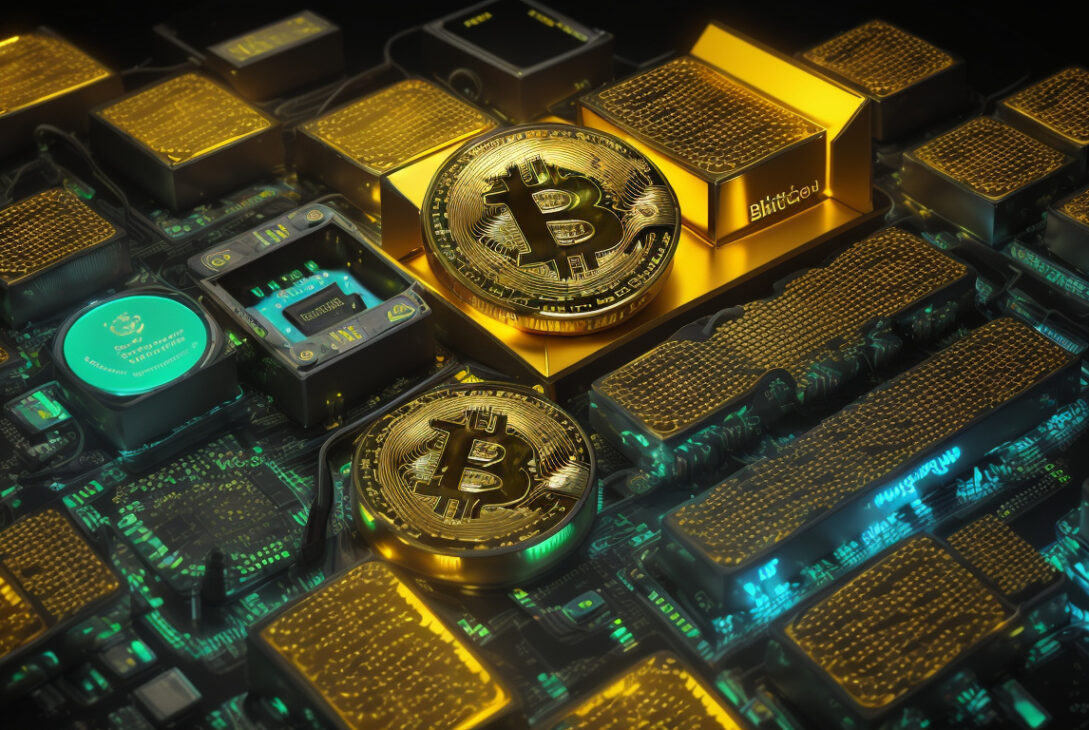Bitcoin mining anchors the Bitcoin network. It links computers, transactions, and security in one process. This process connects miners, hardware, and math. Transactions and new bitcoins come together through mining. In this article, we explain bitcoin mining, its work, and its impact on finance and technology.
What Is Bitcoin Mining?
Bitcoin mining brings new bitcoins into circulation. It ties together transaction records on the blockchain—a digital ledger that stands alone. Miners use specialized hardware and complex math. They solve problems, verify transactions, and add them to the chain. This close link of actions secures and validates the network without any central control.
At its heart, mining solves cryptographic puzzles. Miners earn bitcoins as a reward for their work. Their effort links computation to incentive, and blocks to security.
How Bitcoin Mining Works: A Step-by-Step Overview
To see how mining works, note how the blockchain operates. The steps join together in a clear chain:
- Transaction Requests: Users send transactions. The network collects these and forms a pool.
- Block Creation: Miners pick pending transactions and pack them into a block.
- Puzzle Solving: Miners then race to solve a complex problem—Proof of Work. They search for a hash, a unique string that must meet strict criteria.
- Verification and Addition: When a miner solves the problem, it shares the answer. Other miners check this solution; once verified, the block joins the chain.
- Reward Distribution: The miner who succeeds takes a block reward and the fees from the block’s transactions.
This chain of steps repeats roughly every 10 minutes, connecting blocks one after the other.
The Role of Hashing and Proof of Work
Hashing and proof of work are core to bitcoin mining. Miners use a hash function (SHA-256) to change block data into a fixed string. The challenge forces the hash to meet strict criteria. The closer the criteria come together, the more work it requires.
Proof of Work uses this idea. It connects heavy computation to block generation. This design prevents attackers from tampering with the chain, as re-mining every linked block becomes nearly impossible.
Why Bitcoin Mining Matters: Significance Beyond the Technology
Bitcoin mining matters because it builds security and decentralization. It joins together network trust and integrity. Key points include:
• Security: Mining makes alteration of transaction history very hard.
• Decentralization: Many independent miners join in, and no single group controls the process.
• Monetary Supply Regulation: Mining links bitcoin supply to a fixed issuance schedule, capped at 21 million bitcoins.
• Economic Incentives: Mining connects honest work to rewards, and stimulates technology innovation.
Mining also spurs the development of energy-efficient hardware and renewable energy use. It ties progress in technology to the need for ecological care.
Environmental Impact: Challenges and Responses
Bitcoin mining links to environmental concerns because it uses high electricity. The network’s power draw can equal that of small countries. Yet, the industry responds by linking mining to renewable energy and efficiency improvements. Miners now locate their rigs in places with surplus clean energy and natural cooling. This mix of technology and ecology forms the core of current debates.

Equipment Used in Bitcoin Mining
Mining originally tied to ordinary computers. Soon, it connected to GPUs (graphics processing units). As the work grew, miners moved to ASICs (Application-Specific Integrated Circuits). These devices are built to join speed with energy efficiency.
Common Types of Bitcoin Mining Equipment:
• CPU (Central Processing Unit): Initially used, but now too weak.
• GPU (Graphics Processing Unit): More efficient than CPUs, used before ASICs.
• ASICs: The current standard, linking speed and low energy use.
How to Get Started with Bitcoin Mining
For those ready to mine, the steps interconnect research and setup:
- Research and Budget: Determine your capital for hardware and electricity.
- Choose Equipment: Purchase rigs that match your budget.
- Join a Mining Pool: Individual mining often fails due to high competition. Pools share the mining load and rewards.
- Set Up a Wallet: Connect a bitcoin wallet to receive rewards.
- Install Mining Software: This software links your hardware to the Bitcoin network.
- Optimize and Monitor: Adjust settings constantly to link efficiency with performance.
Profit in mining ties to bitcoin price, electricity, and network difficulty.
Frequently Asked Questions (FAQs) About Bitcoin Mining
1. What is bitcoin mining difficulty, and how does it affect miners?
Mining difficulty measures how hard it is to generate a valid hash. It links directly to the total computing power on the network. Difficulty shifts every two weeks, ensuring that blocks appear roughly every 10 minutes. Higher difficulty ties to more work and higher energy use.
2. Can bitcoin mining be profitable for individuals?
Profit links to hardware efficiency, cost of electricity, bitcoin price, and difficulty. For those with high costs or old rigs, profit may slip away. Joining pools can join your work with others and share rewards.
3. How does bitcoin mining differ from other cryptocurrency mining?
While many digital coins use mining, they tie together different algorithms. Bitcoin uses SHA-256 Proof of Work. Other coins may choose different proofs or methods like Proof of Stake (PoS). Each method ties energy use and security in its own way.
Conclusion: Why Bitcoin Mining Still Matters in 2024 and Beyond
Bitcoin mining ties together the key parts of the network. It connects transaction verification, coin production, and ledger security. By linking these functions, miners preserve the network’s integrity. Even with energy challenges, mining’s link to innovation and sustainability will shape its future.
Understanding bitcoin mining links knowledge to action. For many, it also connects the evolution of money with decentralized tech. As blockchain spreads and the digital economy grows, mining will continue to connect new opportunities and challenges.
If you wish to join this network, link with the world of mining and community. With the right tools and insight, you can help shape finance’s future. Embrace the blockchain revolution and start mining today!
For detailed insights on mining and blockchain security, consider the Bitcoin Whitepaper by Satoshi Nakamoto.










